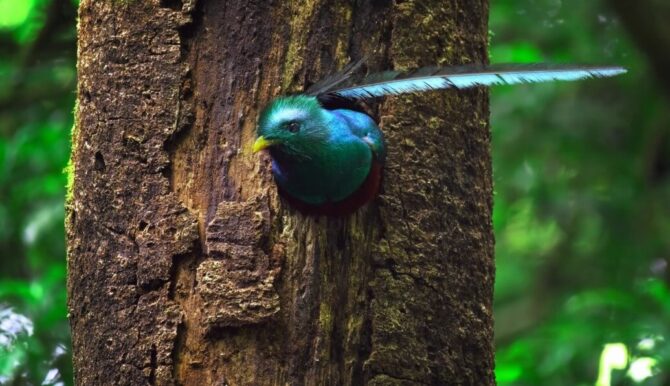The first things that may come to mind when you think of prehistoric creatures are likely to be large, lumbering dinosaurs. But what about contemporary reptiles that appear to have a hint of the past?
Yes, I’m referring to alligators and crocodiles. Have you ever questioned whether these animals are still related to dinosaurs?
Let’s study the intriguing relationship between these reptiles and the powerful dinosaurs by exploring the field of herpetology.
A Glimpse into the Past

The Mesozoic Era, often dubbed the “Age of Dinosaurs,” is a significant chapter in Earth’s vast history. From 230 to 65 million years ago, an era predating human existence stretched across approximately 165 million years. During this time, a captivating array of creatures flourished and declined, leaving an indelible mark on the history of our planet.
The Three Epochs of the Mesozoic
It is believed that the Mesozoic era consisted of three epochs.
Triassic Period (230-200 million years ago)
The Triassic was a time of recovery and rebirth. The Earth was rebounding from the Permian-Triassic extinction event, the most devastating mass extinction in history. It wiped out nearly 95% of marine species and 70% of terrestrial species. As the planet healed, new life forms began to emerge. Among them were the first dinosaurs, which were relatively small compared to the giants that would come later. The Triassic also saw the first mammals, albeit tiny, and the first flying vertebrates, the pterosaurs.
Jurassic Period (200-145 million years ago)
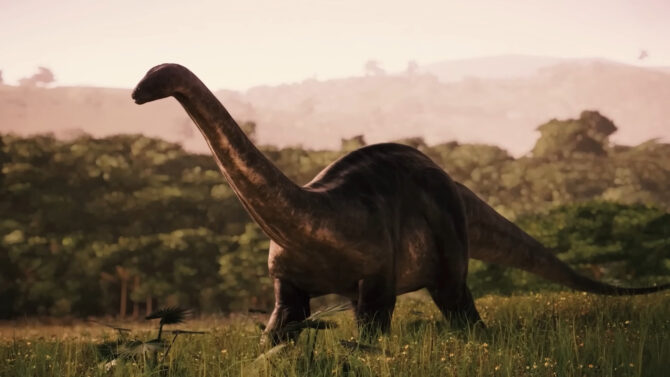
The name ‘Jurassic’ often evokes images of colossal dinosaurs and for a good reason. This period saw the rapid diversification and dominance of these creatures. The continents began to drift apart, leading to varied ecosystems. The famous long-necked sauropods, like Brachiosaurus and Diplodocus, and predators like Allosaurus, roamed the land. The first birds, evolving from theropod dinosaurs, also took to the skies during this period.
Cretaceous Period (145-65 million years ago)
The final chapter of the Mesozoic Era, the Cretaceous period was marked by the further diversification of dinosaurs. Tyrannosaurus rex, Triceratops, and Velociraptor are some of the iconic species from this time. However, this period ended in tragedy. A combination of volcanic activity, changing sea levels, and a massive asteroid impact led to the Cretaceous-Paleogene extinction event, wiping out the non-avian dinosaurs.
What Defines a Dinosaur?
The term ‘dinosaur’ is derived from the Greek words ‘deinos’ (terrible) and ‘sauros’ (lizard). But what truly defines a dinosaur? Dinosaurs, belonging to the clade Dinosauria, are distinct from other reptiles based on specific anatomical features:
- Upright Posture: Unlike modern reptiles that sprawl, dinosaurs had an erect posture. Their legs were positioned directly beneath their bodies, providing them with the ability to support larger weights and move efficiently.
- Unique Hip Structure: Dinosaurs can be broadly categorized into two groups based on their hip structure: Saurischia (lizard-hipped) and Ornithischia (bird-hipped).
- Hollow Bones: This feature, particularly in theropod dinosaurs, is a testament to their evolutionary link to birds. Hollow bones reduce weight, aiding in mobility and, for some, flight.
While the Mesozoic skies were dotted with pterosaurs and the oceans teemed with marine reptiles like ichthyosaurs, these creatures, despite their contemporaneous existence with dinosaurs, were not dinosaurs themselves. For those interested in learning more about the world of dinosaurs, there are numerous excellent books available that provide comprehensive insights into these magnificent creatures.
Linking Crocs, Gators, Dinosaurs, and Birds
The Archosauria clade is like a grand ancestral tree, with branches leading to today’s birds and crocodilians and the extinct dinosaurs and pterosaurs. Crocodiles and alligators, members of the order Crocodylia, share this ancient lineage with dinosaurs.
Archosaurs made their first appearance in the late Permian period, setting the stage for an evolutionary journey that would lead to some of the planet’s most awe-inspiring creatures. Their shared ancestry is evident in certain anatomical features. One such feature is the antorbital fenestra, a hole in the skull in front of the eye, which is present in both crocodilians and dinosaurs.
In essence, while crocodiles and alligators are not dinosaurs, they are like distant cousins, with shared ancestral roots and evolutionary stories that intertwine and diverge across the vast expanse of geologic time.
Evolutionary Divergence
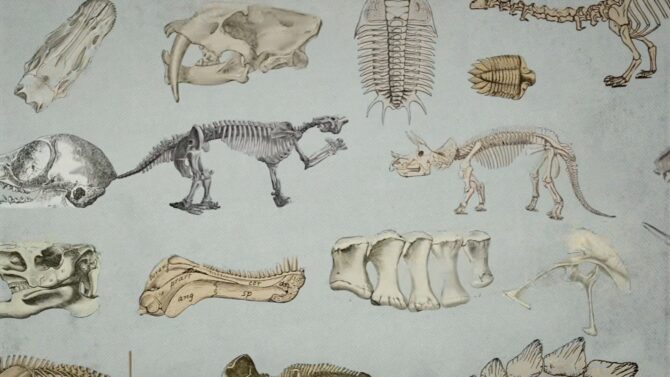
The story of life on Earth is marked by countless branching paths, where species diverged, adapted, and carved out their own evolutionary niches. One of the most significant divergences in the reptilian world occurred around 250 million years ago within the Archosauria clade.
The Two Main Lineages
- Avemetatarsalia: Often referred to as the “bird-line” archosaurs, this lineage is incredibly diverse. It encompasses:
- Pterosaurs: The first vertebrates to achieve powered flight. These winged reptiles, with their varied sizes and forms, ruled the skies during the Mesozoic Era.
- Dinosaurs: The dominant terrestrial vertebrates for over 160 million years. This group further diversified into various subgroups, including the massive sauropods, the armored ankylosaurs, and the bird-like theropods.
- Birds: Arising from theropod dinosaurs, birds are the only lineage to survive the mass extinction at the end of the Cretaceous period. Today, they are the most diverse group of land vertebrates, with over 10,000 known species.
- Crurotarsi: This lineage is sometimes called the “crocodile-line” archosaurs. It includes:
- Aetosaurs: Herbivorous, armored reptiles that lived during the Triassic period.
- Phytosaurs: These creatures resembled modern crocodiles but had nostrils situated near their eyes.
- Modern Crocodilians: Including crocodiles, alligators, caimans, and gharials. These apex predators have remained relatively unchanged in form for the past 80 million years, showcasing their evolutionary success.
Adapting and Thriving in the Mesozoic World
While both Avemetatarsalia and Crurotarsi lineages flourished during the Mesozoic Era, they occupied different ecological roles. The Avemetatarsalians, especially dinosaurs, dominated terrestrial ecosystems, from dense forests to open plains.
In contrast, many Crurotarsians, particularly the ancestors of modern crocodilians, found their niche in freshwater environments, becoming semi-aquatic ambush predators.
Resilience Through Catastrophe: Crocodilian Survival
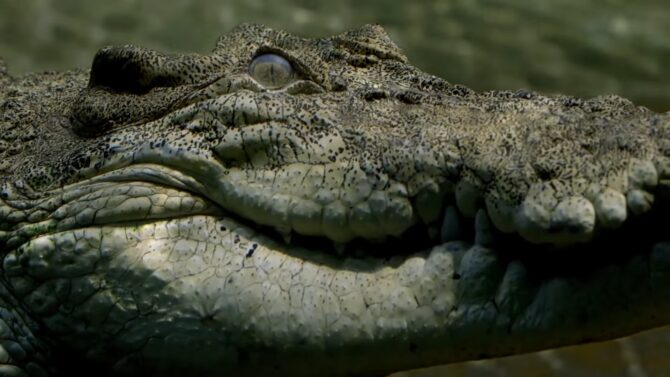
The end of the Cretaceous period, around 65 million years ago, marked one of Earth’s most significant mass extinctions. While the non-avian dinosaurs vanished, crocodilians endured. Their survival is a testament to their adaptability and resilience.
Several factors might have contributed to their survival:
- Semi-Aquatic Lifestyle: Water bodies likely acted as buffers against the drastic environmental changes that occurred after the asteroid impact. While terrestrial ecosystems were severely disrupted, aquatic ecosystems might have offered a more stable environment.
- Diverse Diet: Modern crocodilians have a varied diet, from fish to mammals. This dietary flexibility might have allowed their ancestors to exploit available resources during times of scarcity.
- Ectothermy: As ectotherms, crocodilians can regulate their body temperature using external sources. This ability might have been advantageous during periods of climatic instability.
Birds: The Living Dinosaurs Among Us
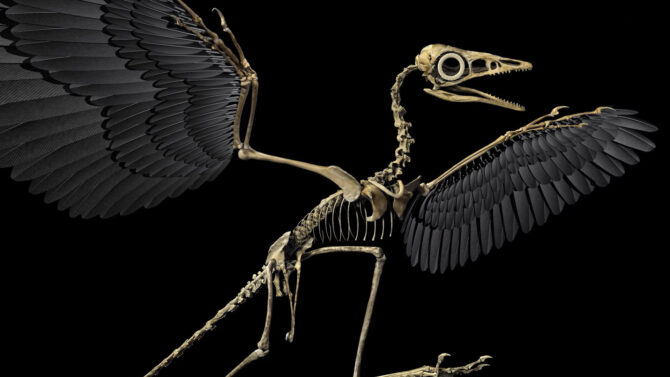
It’s a humbling thought that every time we hear the chirping of sparrows or watch eagles soar, we are witnessing the legacy of the Mesozoic Era. Birds, as direct descendants of theropod dinosaurs, carry the torch of the dinosaur lineage into the present day.
Their presence reminds us of the intricate tapestry of evolution and the enduring power of life to adapt, change, and persist against all odds.
FAQ
Are crocodiles older than dinosaurs?
No, they both belong to the Archosauria clade and evolved around the same time. However, the ancestors of modern crocodiles diverged from the lineage that led to dinosaurs during the Triassic period.
Why do crocodiles look so prehistoric?
Crocodiles have retained many ancestral features over millions of years. Their body plan has proven to be highly effective for their semi-aquatic, ambush predator lifestyle, leading to little need for drastic evolutionary changes.
Did any dinosaurs have a lifestyle similar to crocodiles?
Yes, some of them, like the Spinosaurus, are believed to have had a semi-aquatic lifestyle, similar to modern crocodiles. They had adaptations that suggest they spent a significant amount of time in the water.
Birds are direct descendants of theropod dinosaurs, making them more closely related to dinosaurs. However, both birds and crocodiles belong to the Archosauria clade, making them distant relatives.
Why didn’t crocodiles grow as large as some of the biggest dinosaurs?
While some prehistoric crocodilians were much larger than today’s species, the ecological niches and environments they occupied differed from those of large dinosaurs. The largest of them, like sauropods, evolved in terrestrial ecosystems with different pressures and opportunities than the aquatic and semi-aquatic habitats of crocodilians.
While crocodiles, alligators, and Mesozoic marine reptiles like ichthyosaurs and plesiosaurs are all reptiles, they belong to different evolutionary lineages. Crocodilians are more closely related to birds and dinosaurs than to these marine reptiles.
Final Words
The world of herpetology is vast and fascinating. While crocodiles and alligators are not dinosaurs, they share a deep evolutionary history with them.
These ancient reptiles have witnessed the rise and fall of the dinosaurs and have survived through multiple mass extinctions. Their continued presence on Earth is a testament to their adaptability and resilience.
So, the next time you see a crocodile or an alligator, take a moment to appreciate the living relic of a bygone era.


